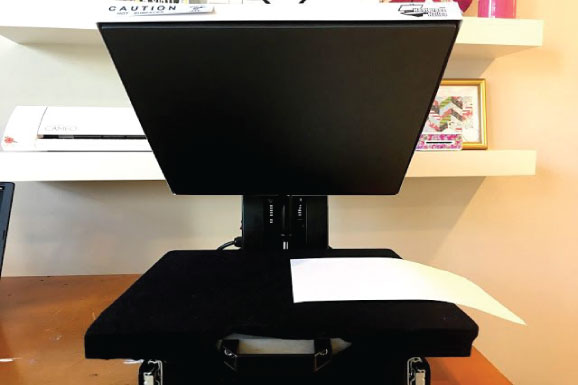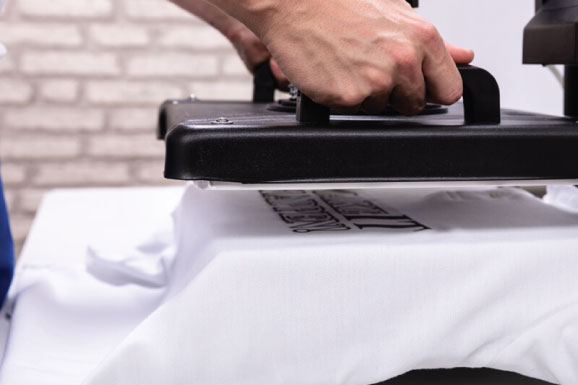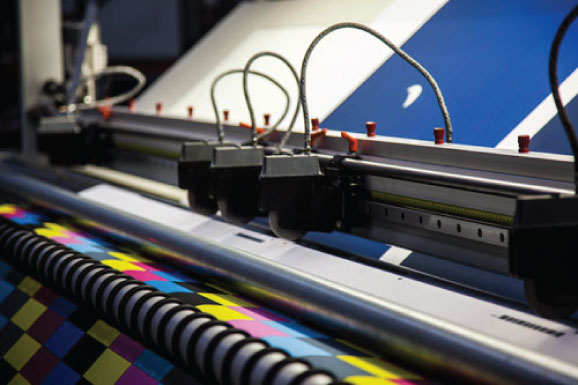
DTF – Direct to Film Printing
What is a DTF, and how does it work?
Direct to film printing is a one-of-a-kind printing method that includes producing graphics on special films and then transferring them to clothes. DTF printing is a heat transfer technique that lasts as long as classic silkscreen printing. DTF is a printing method that is not the same as DTG. Following the printing and drying of a film transfer with a specific water-based ink, a powdered adhesive is applied to the back and heat cured, making it suitable for storage or immediate use. DTF has the benefit of eliminating the requirement for pre-treatment because powdered glue does it for you. In 15 seconds after being heat pressed, the soft water-based ink is transferred to the clothing. Traditional DTG printing is difficult to print on polyester and other non-cotton textiles. Thus, the transfer is best employed on those.
First and foremost, using printer DTF in your printing firm does not necessitate a significant financial commitment. Taking a deeper look at these printers is worthwhile whether you are new to the printing industry or want to adjust your DTF printing to expand your business.
Multiple colored ink tanks are commonly included with DTF Modified printers. These tanks make it easier for printers to work with CMYK settings. The DTF printer ink was created particularly for this operation.
In addition, the DTF technique removed the usage of rollers, which caused the page to slide earlier. Any linings on your white layer prints will be removed due to this. So, if you want a printing method that produces immaculately finished designs that accurately reflect the picture you desire on the cloth, DTF is the way to go.
DTF Printing Equipment
Films for Direct to Film Printers
PET films are utilized in a DTF printer because they are distinct from those used in screen printing. PET films have a thickness of around 0.75mm, making them superior at expressing details. In the market, these films are referred to as DTF Transfer Films.
They’re available as cut sheets for small-scale applications or as rolls for large-scale commercial use. PET Films are divided into two categories based on their temperature. There are two types of films: cold-peel and hot-peel.
Hot-Melt Adhesive Powder
The adhesive substance for Direct to Film printing powder is a white granular product. This aids in binding colored pigments in your printer to the printing surface. However, this STF hot melt is available in a variety of micron grades.
Automatic Powder Shaker
This Direct to Film printer component is more commonly used in commercial applications (where the DTF printer evenly distributes the powder). In addition, the powder shaker eliminates any extra powder.
Heat Press Machine
This piece of equipment aids in the transfer of your film’s produced pictures to the chosen surface or fabric. This equipment may also be used to melt powder on DTF film.

Printer Software for DTF
DTF printers require software to function. This is because the software has an impact on color performance, ink print characteristics, and final print quality. To manage your white and CMYK colors in DTF printing, you’ll need specialist RIP software.
It is necessary because software controls color profiling, drop sizes, ink levels, and other crucial print quality aspects.
Inks for DTF Printers
Unique pigments in Cyan, Yellow, Magenta, White, and Black colors are utilized in Printer DTF inks. The white ink is used to lay the basis for your print, and the color pigment is used to create the design of the film.
Making the DTF Transfer | DTF Printing Process
Step 1: Create a print on film
Place the PET film in the printer trays and press the Print button.
Step 2: Apply the Powder
The application of hot-melt powder to the film with the printed image is the next step. The powder must be applied while the print is still wet! Make sure the powder is uniformly distributed.
Step 3: Melt the Powder
The following step, as stated in the explanation, is to melt the powder into position. The most typical method is to simply heat the direct to film DTF transfer for roughly 2 minutes.
Step 4: Pre-pressing the T-shirt
Not only shirts, whatever you plan to use your DTF transfer for should go without a hitch. Any irregularities in the fabric will be visible in the print!

Step 5: Using the DTF Transfer
In the heat press, the PET film with the image and molten powder is applied to the pre-pressed material. Then, just like any other shirt, you’ll heat press the transfer into it, following the manufacturer’s recommendations, of course.
Step 6: Peel the DTF Transfer
DTF employs a COLD PEEL technique. A hundred percent of the time, Peel off the transfer once the film has cooled, leaving the desired design behind!
Pros and Cons of DTF
Pros
- It can be used with almost any sort of cloth.
- It’s ideal for printing small amounts of text.
- Unlike DTG, it does not necessitate pre-treatment.
- It is not necessary to use a screen block such as Silkscreen.
- There is no limit to the number of colors that can be printed; any color can be printed.
- There’s no need to weed or cut.
- Little minimums as low as one A2 size
- The cloth has a vivid color, and a very soft hand feel.
- The fabrics created in this way have good washability.
- The process takes less time and effort than DTG printing.
Cons
- Compared to fabrics designed with DTG printing, the feel of the printed areas is slightly different.
- If the printing area is large, it’ll be more costly.
Is the printing of DTF good quality?
While DTF is softer than laser heat transfers, it still isn’t as soft as traditional DTG printed shirts. DTF inks can be used in a DTG printer, so if you already have a flatbed, then you can do either! While DTF is less expensive in terms of ink and has higher print quality, inefficiency is a major concern, and there is no way to avoid the one-shirt print time.
Is DTF superior to sublimation?
DTF printing means transferring a picture to a textile or substance using transfer paper. DTF transfer is superior to sublimation for achieving photo-quality pictures. With a higher polyester percentage in the fabric, the overall picture quality would be greater and more vibrant.

What type of printer is required for DTF? Is there a DTF printer from Epson?
DTF Modified Printers: These printers are also known as direct-to-film printers. These printers are typically six-color ink-tank printers, such as the Epson L800, L805, and L1800. This printer series was chosen since it can print in six different colors.
The L1800 (1430 with bulk ink) is widely used since it is inexpensive and widely available outside of the United States. It prints 13×19 but at a snail’s pace. A full print will take at least 15 minutes. Printhead with 6 channels. The L1800 is a small six-color A3+ printer for households and offices on a budget. It prints images in roughly 191 seconds. Its large ink tank technology allows it to print 1,800 10x15cm photos before needing to be refilled.
Because it has an 8 channel DX5 printhead, the P400 is at least three times faster than the L1800 / 1430. Ink cartridges or CISS plug right into the printhead, allowing enabling simple access to the printhead and less wasted ink when the printer needs to sit for days without being used. 13×19 inches is the maximum print size.
With an 8 channel DX7 printhead, the P600 is as quick as the P400. Because of the built-in pressured ink system and accessible 80ml cartridges, it is best if you print frequently and in large quantities. Because of the ink system, not using it frequently will result in white ink separation in the lines, requiring you to spend ink in order to remove it. 13×19 inches is the maximum print size.
The print width on the P800 is 17 inches. Like the P600, it has an ink system built-in.
Is DTF printing long-lasting?
DTF printing is suitable for the workplace since the specific ink and adhesive increase durability. Because of the water-based ink utilized, the design does not fracture, unlike silk screening, and has a really soft feel. This makes the whole thing ideal for overalls, high-visibility, gym and riding clothing.
Is DTF printing superior to DTG printing?
DTG is significantly superior, but DTF is an excellent add-on for being able to print on materials that were previously difficult to print on with DTG since its origins. DTG takes less time than the other process; 100 shirts can be printed in around 3 hours.
DTF or screen printing: which is better?
Unlike screen printing, which employs thick ink, DTF uses water-based inks that are thinner. The design is incorporated in the fabric with the DTF method. DTF printing is ideal for intricate graphics with several colors. It’s also a wonderful technique to print photos on any type of garment.
What is the price of DTF printing?
The cost of a DTF print can be as low as $2.2/sqft. That is, without a doubt, the greatest deal on the market. Don’t bother with costly DTG prints or multicolored silk screening.
What’s the distinction between DTF and DTG printing?
In the same manner that DTG stands for direct-to-garment, DTF stands for direct-to-film. DTF is essentially an inkjet transfer printing technology that combines inkjet printing with a hot melt “glue” and a transfer film. Consider it analogous to generating white toner printer transfers.
Are DTF and sublimation the same? Are there any differences? Is Sublimation or DTF Better?
The major factors that determine the quality of DTF transfers are flexibility and washability. Sublimation paper does not have this feature. The feel after hot stamping is different. Sublimation paper is ink that penetrates into the cloth, giving it its name. It is velvety to the touch.
Sublimation creates garments with more bright colors and the ability to match the color tone, which is not feasible with the digital process. It is also a lot faster, making it far more efficient in Inkterprints situation with such a big manufacturing volume. Colorfastness and durability are some advantages of sublimation printing.
The major factors that determine the quality of DTF transfers are flexibility and washability. This is not a feature of a sublimation paper. After you’ve done some hot stamping, you’ll notice a difference in the way you feel. Sublimation paper is ink that sinks into the cloth, giving it its name. It is velvety to the feel.
What’s it like to make a DTF Transfer?
The texture will be determined by the powder you use and the density of your paint layer. Standard vinyl or other kinds of heat transfer have a better touch than our soft and elastic DTF powder. It has a supple and nice feel to it.
What is the procedure for pressing DTF transfers?
Press the moisture out of your shirt with medium to heavy pressure, then press the print on the fabric for 15 seconds, wait 10 seconds, and peel hot. It’s not necessary to utilize a sheet. Press for 5-10 seconds without a cover sheet once you’ve peeled the transfer!
Is it possible to print on cotton with DTF?
DTF transfers are a versatile transfer for clothes since they work with cotton, 100% polyester, and cotton/poly mixes. More product options are available.
Is DTF comparable to vinyl?
Direct-to-film (DTF) is a revolutionary digital printing method. A high-end vinyl cutter or plotter is no longer required with a DTF printer, unlike heat transfer vinyl printing, because complicated patterns do not need to be weeded out. As a result, customers may be able to save money on their first purchase. Thanks to DTF printing technology, the printed design result has a softer, less “rubbery” feel. Heat transfers vinyl printed products will always have a “rubbery” feel to them since the texture comes from the vinyl.
What is the most acceptable way to clean a DTF printer?
DTG ink does not clog as easily, and when it does, it is much easier to clean. DTF white ink still separates and needs to be shaken every day. Regular printing is the best form of upkeep. If you print every two days, all you have to do before printing is mix the ink and clean the head using an automatic printhead cleaner.
Is there a lot of printer maintenance involved with DTF printing? Can I leave my DTF printer off for an extended period of time?
DTF printing still necessitates the same level of care as DTG printing. Just not as frequently. DTG ink does not clog as easily, and when it does, it is much easier to clean. DTF white ink still separates and needs to be shaken every day. Regular printing is the best form of upkeep. If you print every two days, all you have to do before printing is shake the ink and clean the printhead using an automatic printhead cleaner. Not using the printer for a long time will jam up in the same way that a DTG or conventional inkjet printer would. If you’re going to keep your printer turned off for a few weeks or months, flush the lines, clean the printhead, and soak it in a cleaning solution.
What type of store requires DTF transfers?
If you’re a high-volume screen printer of t-shirts and hats, it’s unlikely that you’ll be able to accommodate a customer who wants 10-12 prints. You don’t want to disappoint your customers. Even so, setting up and printing the order for the family reunion T-shirts isn’t always as profitable as setting up and printing that order for the corporate client who wants 150 shirts for the company’s next softball event. DTF transfers provide a straightforward solution for one-off orders, allowing you to continue to serve your lower-volume customers without jeopardizing your bottom line or personnel expenditures.
Assume you’re in the crafts business and sell your wares on Etsy. DTF transfers are also a cost-effective solution to deliver limited-edition printed goods to your store in this situation. Furthermore, you may experiment with numerous designs without needing to print a significant quantity to ensure that the product would sell. DTF should be viewed as a supplement to a printer’s primary business.
Why DTF Printers?
DTF Printers and the unique ink they employ provide high-quality printing. DTF printers can help you bring out the brightness and delicacy of color tones in dark and light materials.
As a result, DTF printers effectively help you overcome all of the limitations of standard commercial printing techniques. DTF printers also save you money on total printing expenses because you don’t need any treatment in most circumstances. This might result in substantial profit margins for your company.
DTF printers, for example, are expected to increase rapidly in the textile sector in the next years. For all of its advantages, the industry anticipates that more and more enterprises will use DTF printing technology. A DTF printer is a way to go if you’re a textile or t-shirt firm looking to manufacture printed fabric at a low cost and with efficiency.
We also sell DTF inks and DTF films. If you want to go for a DIY at home, you can purchase from our online store. Check out the available products at DTFPrintingTransfer.com.